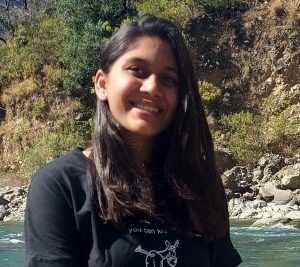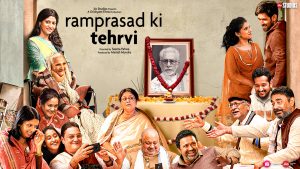Ramprasad Ki Tehrvi: A satirical family drama amidst the funeral.

Khevna.P.Shah, INN/Bangalore
Content Writer
Ramprasad Ki Tehrvi is a satirical family drama directed and written by Seema Pahwa. In India, the entire family gathers only on two occasions: one being a wedding and the other being a funeral. But ‘Ramprasad ki tehrvi’ won’t let you forget what is it like being under one roof with different family members who have their own quirk. It is an emotional ride but leaves you with an elevating heart. This movie is a fun and complete package of comedy, grief, romance, troubles making sure these emotions don’t overpower each other.

The movie is centered in Lucknow, which revolves around a middle-class family who is trapped under one roof for the 13-day ceremony of the dear departed – head of the family, Ram Prasad (Nasiruddin Shah). Amidst the funeral the children of the demise, Manoj (Nina Kamat), Gajraj (Manoj Pahwa), Pankaj (Vinay Pattak), and Nishant (Parambrata Chatoppadday) have a heart filled conversation with each other after years, revealing their personal crisis. The two daughters of the deceased Rani (Anubha Fatehpura) and Dhaani (Sarika Singh) comfort ‘Amma’ (Supriya Pathak). No one can imagine the funeral to be the event to bond with the family. The movie questions the role of the children and their perception of the funeral. The movie manages to make the audience emotional and at the same time make them laugh.
Supriya Pathak made the character come out alive and her acting was spectacular. The expression, tone, and body language were constant. Her role delivered a lot of emotions without many dialogues. One can genuinely relate to her grief when every visitor asks her ‘kaise hua?’, and she narrates the incident with the same tone throughout the movie. Special appearance, Konkan Sen Sharma (wife of the youngest son, Nishant) also did a great job, she always felt like an outsider among her in-laws, but at the end of the movie, her character did evolve. The entire ensemble was perfect in their role and so realistic that the audience can relate to it. The daughters-in-law were shown as comical characters but at the same time underlining the family politics and gossips. This is a typical Indian household drama, where the daughter-in-law who does stick by her duties is often bullied, the family faces financial problems, and a strained parental relationship.
The screenplay was smooth and the comical deliveries were perfectly timed. The cinematography by Sudip Sengupta captured every emotion and every single detail of the scene. A particular scene from RPKT is when a pilar divides the two-generation and ‘Amma’ stands behind it watching the second generation -her sons who consume alcohol and create a ruckus and the other side, the third generation -her grandchildren sneak into the house every late, realizing that they don’t understand the seriousness of the situation. The movie occasionally slips into the flashback of the younger ram prasad and his wife, constantly remaining the audience that the memory of the deceased is always embedded in one’s heart.
Unlike the recent Netflix release Pagglait, which solely focused on the journey to self-realization of the recently windowed, Ram Prasad ki Tehrvi focuses on the dysfunctional middle-class

